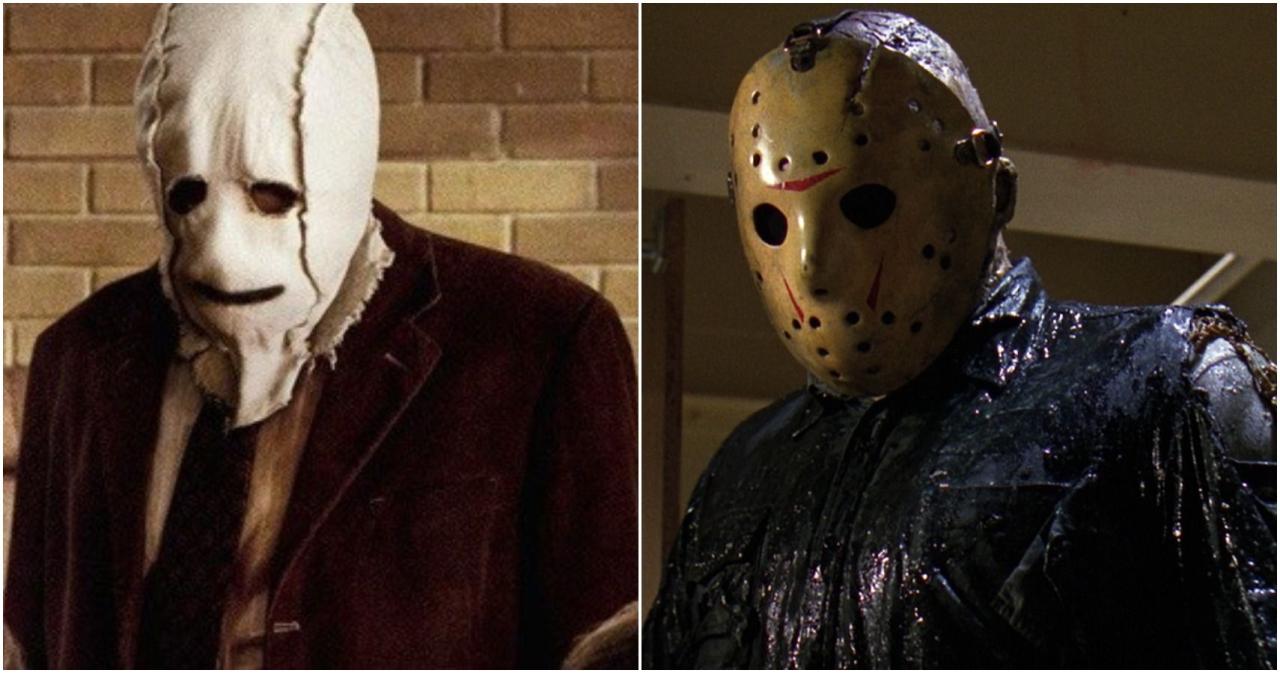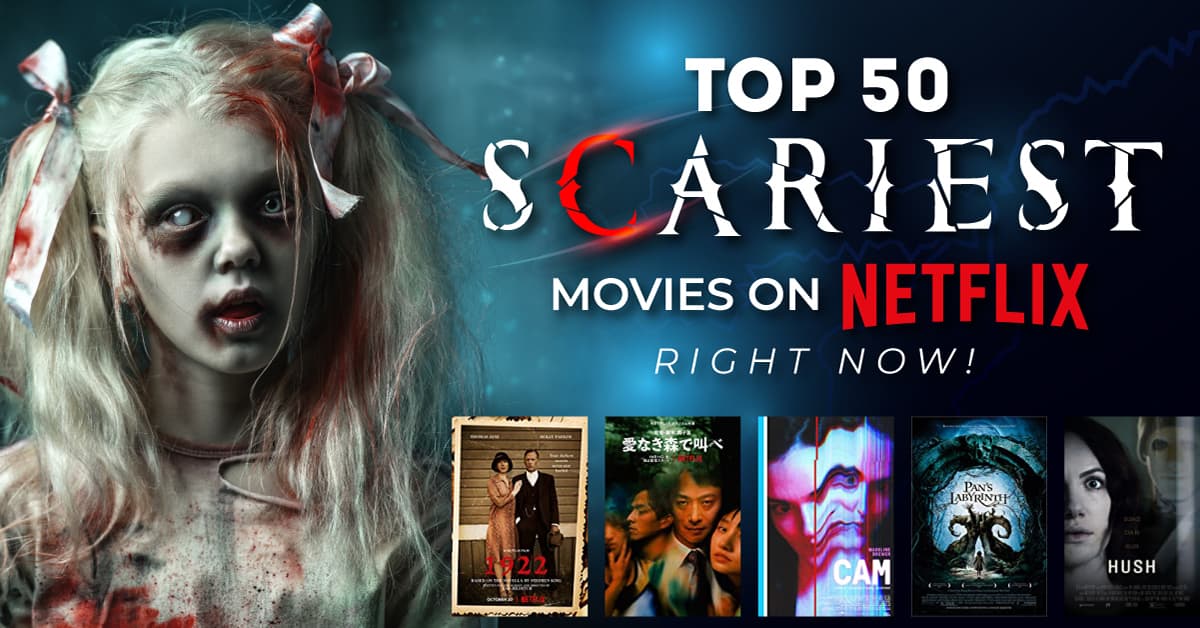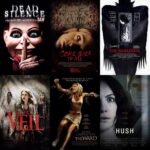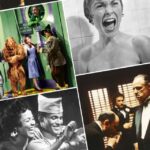Scariest 21+ Horror Movies in the U.S. delves into the subjective nature of fear, exploring why some films resonate more profoundly than others. We’ll examine the evolution of American horror, from classic monster movies to modern psychological thrillers, considering the impact of technological advancements, sound design, and character development on the overall scariness factor. This exploration considers both critical acclaim and audience response, acknowledging the diverse ways in which horror affects viewers.
The analysis will cover various subgenres, including slasher films and psychological horror, comparing their respective strengths in creating suspense and dread. We will also discuss the role of violence and gore, examining whether graphic depictions always equate to a more terrifying experience. Ultimately, this examination aims to provide a nuanced understanding of what constitutes a truly frightening horror film within the American cinematic landscape.
Defining “Scariest”
The term “scariest” when applied to horror films is inherently subjective. What one person finds terrifying, another might find mildly unsettling or even humorous. This subjectivity stems from a complex interplay of personal experiences, psychological predispositions, and the specific techniques employed by filmmakers to evoke fear. Understanding this subjectivity is crucial when discussing the “scariest” movies, as any ranking will inevitably reflect a specific perspective or set of preferences.
Defining “scariness” requires acknowledging the diverse landscape of horror subgenres and their respective approaches to fear. Different subgenres utilize different scare tactics, leading to vastly different viewer experiences.
Horror Subgenres and Scare Tactics
Horror films employ a wide array of techniques to frighten audiences. For example, slasher films, like the *Friday the 13th* series, rely heavily on jump scares and graphic violence to create immediate, visceral fear. Psychological horror, exemplified by films such as *The Shining*, utilizes suspense, atmosphere, and unsettling imagery to create a more lingering sense of dread and unease. Found footage films, such as *The Blair Witch Project*, aim to heighten realism and create a sense of vulnerability by presenting the horror as if it were authentically captured events. Finally, cosmic horror, as seen in *The Thing*, taps into primal fears of the unknown and the vastness of the universe, generating a sense of helplessness and existential dread. These varied approaches demonstrate that “scariness” is not monolithic but rather a multifaceted concept dependent on the specific techniques used.
Critical and Audience Reception Discrepancies
A comparative analysis of critical and audience reception reveals significant discrepancies in “scariness” ratings. Critics often focus on technical aspects, narrative structure, and thematic depth, while audiences primarily respond to the emotional impact and visceral experience of the film. A critically acclaimed film might not necessarily be considered “scary” by a broad audience, and vice versa. For instance, a critically lauded psychological thriller might be lauded for its complex characters and suspenseful narrative, but may not induce the same level of immediate fear as a slasher film with plentiful jump scares. This divergence highlights the subjective nature of fear and the different priorities of critics and audiences. Such discrepancies are further compounded by cultural differences and individual sensitivities.
Psychological Factors Influencing Responses to Horror
Individual responses to horror films are profoundly influenced by a range of psychological factors. Prior experiences, both positive and negative, can significantly shape how a person reacts to on-screen violence or suspenseful situations. Personality traits also play a crucial role; individuals with higher levels of neuroticism or anxiety might be more susceptible to fear, while those with higher levels of extraversion might find the experience more stimulating. Furthermore, the social context of viewing – watching alone versus with friends – can also modulate the intensity of the emotional response. The anticipation and expectation surrounding a film can also significantly influence the viewer’s experience; a highly anticipated horror film might generate a higher level of anxiety and fear even before the movie begins.
Cultural Impact and Trends in US Horror Cinema
American horror cinema has profoundly impacted global culture, evolving from early gothic horror and expressionism to the diverse subgenres dominating contemporary screens. Its enduring appeal lies in its ability to reflect societal anxieties, explore primal fears, and push creative boundaries within the cinematic landscape. The genre’s evolution mirrors broader shifts in American culture, reflecting changing social norms, technological advancements, and political climates.
American horror cinema’s evolution showcases a fascinating interplay between established tropes and innovative subversions. Early films, often drawing inspiration from gothic literature, emphasized atmospheric dread and psychological torment. Later periods saw the rise of slasher films, reflecting anxieties around violence and societal breakdown, followed by the self-aware meta-horror of the late 20th and early 21st centuries. This continuous reinvention ensures the genre’s ongoing relevance and ability to surprise audiences.
Recurring Motifs and Symbols in American Horror Films
Several recurring motifs and symbols consistently appear in American horror films, contributing to their enduring power and cultural significance. These symbolic elements tap into universal fears and anxieties, allowing filmmakers to explore complex themes in a visceral and engaging manner. The use of these symbols is often layered, allowing for multiple interpretations and engaging viewers on a deeper level.
The haunted house, for example, represents not only a physical location but also the internal struggles and repressed traumas of its inhabitants. Similarly, monsters often symbolize societal anxieties, from the monstrous creations of Frankenstein representing the dangers of scientific hubris to the zombies in Romero’s films reflecting anxieties around consumerism and social decay. The use of darkness and shadows creates a sense of unease and uncertainty, reflecting the unknown and the unseen aspects of life and death. Blood, often a prominent visual element, serves as a symbol of violence, sacrifice, and the fragility of life. These recurring motifs provide a framework for exploring complex themes and anxieties within a visually compelling and emotionally resonant narrative.
A Timeline of Influential US Horror Films and Their Cultural Impact
The following timeline highlights key moments in American horror cinema, showcasing the evolution of themes, styles, and their cultural impact. These films not only entertained but also reflected and shaped societal attitudes towards violence, morality, and the unknown.
| Year | Film | Cultural Impact |
|---|---|---|
| 1922 | Nosferatu (German expressionist film, but highly influential in US horror) | Established the visual language of horror, using shadows and unconventional camera angles to create suspense and dread. Its influence can be seen in countless subsequent horror films. |
| 1931 | Dracula (Universal) | Popularized the vampire mythos in American culture, establishing Bela Lugosi as an iconic horror figure. It solidified the studio horror system and the gothic horror subgenre. |
| 1974 | The Texas Chain Saw Massacre | Revolutionized slasher films, its gritty realism and graphic violence shocked audiences and redefined the boundaries of horror. It tapped into societal anxieties about violence and the breakdown of social order. |
| 1976 | Carrie | Explored themes of teenage angst, bullying, and the consequences of repressed rage. It resonated with audiences grappling with similar issues and helped to establish Stephen King as a major force in horror literature. |
| 1978 | Halloween | Established the slasher film as a major horror subgenre, with its iconic masked killer and suspenseful atmosphere. It influenced countless imitations and remains a cultural touchstone. |
| 1980 | The Shining | Elevated psychological horror to new heights, with its exploration of isolation, madness, and the destructive power of family dysfunction. Its imagery and themes have become deeply ingrained in popular culture. |
| 1996 | Scream | Revitalized the slasher genre with its self-aware, meta-narrative approach. It cleverly subverted horror tropes and expectations, appealing to a new generation of horror fans. |
| 2004 | Saw | Popularized the torture porn subgenre, pushing the boundaries of graphic violence and psychological manipulation. It sparked a wave of imitations and intensified the debate about the ethics of extreme horror. |
Technological Advancements and Horror Filmmaking
The evolution of filmmaking technology has profoundly impacted the horror genre, allowing filmmakers to explore new levels of terror and visceral experience. From the rudimentary special effects of early horror films to the sophisticated CGI and immersive techniques of today, technological advancements have continuously redefined what is possible in scaring audiences. This evolution is a fascinating interplay between practical effects, rooted in tangible artistry, and computer-generated imagery, offering boundless creative potential.
Technological advancements have dramatically altered the horror genre’s capacity to frighten viewers. Early horror relied heavily on suggestion and atmosphere, utilizing shadows, sound design, and creative camera angles to instill fear. The advent of practical effects in the 1930s and 40s, such as prosthetic makeup and stop-motion animation, allowed for more explicit depictions of gore and monsters, amplifying the visceral impact. This led to iconic images that continue to resonate with audiences, solidifying the genre’s visual vocabulary. The subsequent arrival of CGI in the late 20th century revolutionized the possibilities, offering a level of realism and control previously unimaginable. However, this shift also brought new challenges and debates regarding the effectiveness of different approaches.
Practical versus CGI Effects in Horror, Scariest 21+ Horror Movies in the U.S.
Practical effects, involving physical props, makeup, and animatronics, often possess a tangible quality that can be more unsettling than CGI. The physicality of a practical effect makes it feel more real, more immediate. The effort and artistry involved often translate to a heightened sense of dread and unease. For example, the creature effects in John Carpenter’s *The Thing* (1982) remain terrifyingly effective decades later because of their grotesque realism and practical execution. In contrast, CGI effects, while capable of creating incredibly detailed and complex visuals, can sometimes lack the same visceral impact. Over-reliance on CGI can lead to a sense of detachment, where the audience is aware they are watching a digital creation rather than experiencing something genuinely disturbing. The uncanny valley effect, where near-human CGI characters appear unsettlingly artificial, can inadvertently undermine the intended fear response. A successful horror film often employs a blend of both practical and CGI effects, leveraging the strengths of each to create a truly terrifying experience. For instance, the recent *It* (2017) adaptation effectively combines practical makeup for close-ups of Pennywise with CGI for wider shots and more elaborate effects.
A Hypothetical Horror Film Utilizing Cutting-Edge Technology
Imagine a horror film titled “Echo Chamber,” employing cutting-edge virtual reality (VR) technology to create a truly immersive and personalized experience. The story revolves around a seemingly ordinary apartment building that becomes the nexus of a malevolent entity that feeds on fear. The film’s unique scare tactics leverage VR’s ability to manipulate the viewer’s sensory experience. Using advanced haptic feedback suits, the viewer could feel the entity’s presence – a cold touch on their skin, the weight of its gaze, or the chilling whisper of its voice directly into their ear. Furthermore, personalized AI could tailor the scares based on the viewer’s physiological responses (heart rate, breathing patterns) dynamically adjusting the intensity and type of horror elements in real-time. The narrative could unfold in a branching, non-linear fashion, with choices made by the viewer impacting the story’s progression and the intensity of the scares. This personalized, interactive experience would transcend the passive nature of traditional film, placing the viewer directly within the horror, creating a truly unforgettable and terrifying experience. The use of binaural audio would further enhance immersion, creating a realistic sense of spatial awareness and allowing the sounds of the entity to creep up on the viewer from unexpected directions.
The Role of Sound Design and Music in Horror: Scariest 21+ Horror Movies In The U.S.

Sound design and musical scores are integral to the success of horror films, transcending mere accompaniment to become powerful tools for manipulating audience emotions and heightening the overall cinematic experience. They are not simply background noise; rather, they are meticulously crafted elements that amplify fear, suspense, and dread, shaping the audience’s perception of the on-screen events. The skillful use of audio can elevate a scene from mildly unsettling to genuinely terrifying, solidifying a film’s place in the horror canon.
Sound design and music work in tandem to create a potent atmosphere. Sound design, encompassing all the non-musical audio elements, establishes the environment, whether it be the creaks of an old house, the rustling of leaves in a dark forest, or the chilling silence preceding a violent event. Music, on the other hand, often provides an emotional undercurrent, underscoring the tension and building anticipation. The interplay between these two elements creates a complex soundscape that significantly impacts the viewer’s emotional response.
Sound Design Techniques for Building Suspense and Jump Scares
Sound design in horror movies expertly employs various techniques to generate suspense and deliver effective jump scares. Building suspense often involves the use of low-frequency sounds, subtle noises that create a sense of unease and anticipation. For example, a barely audible whisper, the distant drip of water, or a low hum can effectively build tension, keeping the audience on edge. Jump scares, conversely, rely on sudden, loud noises to startle the viewer. These can range from a piercing scream to a sudden crash, often paired with a visual element for maximum impact. The effectiveness of these techniques hinges on the contrast between periods of relative quiet and moments of intense, unexpected sound. Consider the unsettling silence before a sudden, sharp noise in many horror films; this contrast is crucial to the effectiveness of the jump scare. The film *The Exorcist* (1973) masterfully utilizes this technique, contrasting periods of quiet dread with sudden, unsettling sounds related to the demonic possession.
Iconic Horror Movie Soundtracks and Their Contribution to Scariness
The following examples illustrate how iconic horror movie soundtracks contribute significantly to the overall scariness of the films. These scores are not merely background music; they actively shape the emotional landscape and intensify the horror experience. A memorable soundtrack becomes inextricably linked to the film’s imagery and narrative, enhancing the overall impact and ensuring lasting memorability.
- Psycho (1960): Bernard Herrmann’s score: Herrmann’s use of strings, particularly the famous shower scene music, is instantly recognizable and deeply unsettling. The dissonant harmonies and high-pitched violins amplify the violence and create a sense of primal fear.
- The Exorcist (1973): Lalo Schifrin’s score: Schifrin’s score uses unsettling liturgical chants and dissonant orchestral pieces to create a feeling of religious dread and demonic presence. The music perfectly complements the film’s disturbing imagery and themes.
- Halloween (1978): John Carpenter’s score: Carpenter’s minimalist score, featuring a simple, repetitive melody played on a synthesizer, is chillingly effective. The haunting theme perfectly encapsulates the film’s suspenseful atmosphere and the menacing presence of Michael Myers.
- A Nightmare on Elm Street (1984): Charles Bernstein’s score: Bernstein’s score effectively blends electronic music with dissonant orchestral elements to create a nightmarish soundscape. The music perfectly reflects the film’s surreal and terrifying atmosphere, enhancing the sense of dread and helplessness.
Analyzing the Use of Violence and Gore

The effectiveness of violence and gore in horror films is a complex issue, not simply a matter of more being better. While some films rely heavily on graphic depictions of violence to shock and disturb audiences, others achieve a far greater sense of dread and terror through suggestion and implication. The relationship between the level of violence and the overall scariness of a film is heavily dependent on the film’s specific goals and the director’s stylistic choices.
The impact of violence and gore on a viewer’s emotional response is multifaceted. It’s not solely about the quantity of blood and viscera, but also the context in which it’s presented, the cinematography used to depict it, and the emotional arc of the narrative. A single, well-placed moment of graphic violence can be far more impactful than a prolonged sequence of less impactful gore. Conversely, a film that relies solely on graphic violence without a compelling narrative or thematic depth may quickly become gratuitous and desensitizing.
Implied Violence versus Graphic Depictions
Implied violence, where the gruesome details are left to the audience’s imagination, can often be far more terrifying than explicit depictions. The ambiguity allows the viewer to fill in the blanks, creating a personalized experience of fear that is often more potent than anything shown directly. For example, the suspense leading up to a kill in films like “The Texas Chain Saw Massacre” is often far more terrifying than the kill itself, which is only partially shown. This contrasts with films like “Hostel,” which utilize graphic violence as a central element of their narrative. While effective for a specific audience, it may lead to desensitization or viewer aversion. The effectiveness of each approach depends entirely on the director’s vision and the intended effect.
Different Levels of Gore and Emotional Response
The level of gore directly influences the audience’s emotional response. Low levels of gore, often stylized or suggested, can create a sense of unease and suspense, allowing the audience to build anticipation and dread. Moderate levels of gore, while still disturbing, can be used to punctuate key moments, emphasizing the stakes and the brutality of the situation. However, excessive gore can lead to a sense of detachment or even revulsion, diminishing the film’s overall impact. For instance, the relatively restrained gore in “The Exorcist” enhances the psychological horror, while the over-the-top gore in some slasher films can become numbing. The optimal level of gore is a delicate balance, carefully calibrated to support the narrative and amplify the intended emotional response.
Character Development and its Influence on Fear
Effective character development is paramount in horror films; it’s not just about jump scares and gore, but about creating genuine emotional investment in the characters’ fates. Relatable characters, with whom the audience can empathize, significantly amplify the horror experience, making the threat feel more immediate and personal. The fear we feel isn’t just for the monster, but for the characters we’ve come to care about.
The success of a horror film often hinges on the audience’s connection with the protagonists. When we see vulnerability and strength in a character, we become invested in their survival. This emotional connection transforms the horror from a detached spectacle into a visceral, personal experience. The more we know and understand a character, the more we fear for their well-being, and the more effective the scares become.
Relatable Characters Enhance the Horror Experience
Relatable characters provide a crucial anchor for the audience within the terrifying narrative. Their struggles, fears, and vulnerabilities mirror our own, making the horror feel more immediate and impactful. When a character we empathize with faces danger, our own anxieties are heightened. This mirroring effect increases the overall tension and emotional impact of the film. For instance, the characters in “The Babadook” (2014) grapple with grief and trauma, making their terrifying encounters with the Babadook all the more impactful. The audience identifies with the mother’s struggles, making the film’s unsettling atmosphere profoundly unsettling.
Examples of Horror Films with Strong Character Development
Several horror films masterfully utilize character development to enhance the overall fear factor. In “Hereditary” (2018), the complex family dynamics and the unraveling of the characters’ mental states contribute significantly to the unsettling atmosphere. The gradual revelation of the family’s dark history and their individual vulnerabilities intensifies the horror. Similarly, “Get Out” (2017) uses its compelling protagonist, Chris, to explore themes of racism and social anxiety, creating a palpable sense of dread and unease that goes beyond the typical horror tropes. The audience shares Chris’s growing apprehension, heightening the tension as he navigates increasingly sinister situations.
Different Approaches to Character Development in Horror Films
Horror films employ diverse approaches to character development. Some focus on a slow, gradual reveal of character flaws and vulnerabilities, building suspense and anticipation. Others present fully formed characters from the outset, relying on their established personalities to generate empathy and fear. “The Texas Chain Saw Massacre” (1974) showcases a group of relatively underdeveloped characters whose vulnerabilities are immediately apparent, highlighting their helplessness against Leatherface. This approach emphasizes the immediate threat and visceral horror. Conversely, “The Silence of the Lambs” (1991) features a carefully crafted protagonist, Clarice Starling, whose personal struggles and professional ambitions are intricately woven into the narrative, making her triumph over Hannibal Lecter all the more satisfying and emotionally resonant. This detailed characterization increases the audience’s investment in her survival.
Setting and Atmosphere
Setting and atmosphere are crucial elements in horror films, contributing significantly to the overall feeling of dread and suspense. A well-crafted setting isn’t merely a backdrop; it’s an active participant in the narrative, shaping the audience’s emotional response and amplifying the film’s scares. The atmosphere, created through lighting, sound design, and visual composition, works in tandem with the setting to cultivate a sense of unease and anticipation, heightening the impact of the horror elements.
The skillful manipulation of setting and atmosphere can transform a familiar location into a source of terror. A seemingly ordinary house, for instance, can become a claustrophobic prison, its creaking floorboards and shadowy corners hinting at unseen dangers. Conversely, a vast, desolate landscape can evoke a profound sense of isolation and vulnerability, making the characters (and the audience) feel exposed and prey to unseen forces. This interplay between environment and emotion is fundamental to creating a truly terrifying cinematic experience.
Examples of Effective Setting and Atmosphere in Horror Films
Several films masterfully use setting to build suspense and fear. The Texas Chain Saw Massacre (1974) uses the desolate Texas landscape and the dilapidated farmhouse to create a sense of inescapable dread. The film’s oppressive atmosphere, amplified by the unsettling sounds and visuals, contributes to the overall feeling of vulnerability and impending doom. Similarly, The Shining (1980) utilizes the isolated Overlook Hotel and its labyrinthine corridors to generate a feeling of claustrophobia and psychological unease. The vast, empty spaces of the hotel, combined with the unsettling imagery and Jack Torrance’s descent into madness, create a palpable sense of dread. In contrast, The Babadook (2014) uses the confines of a family home to amplify the claustrophobia and psychological tension, turning the familiar space into a source of constant threat. The decaying state of the house reflects the deteriorating mental state of the protagonist.
Comparison of Horror Film Settings and Their Impact
| Setting | Atmosphere Created | Emotional Response | Film Example |
|---|---|---|---|
| Isolated Farmhouse | Claustrophobic, rural dread, vulnerability | Fear, anxiety, helplessness | The Texas Chain Saw Massacre |
| Vast, Desolate Landscape | Isolation, vulnerability, paranoia | Unease, apprehension, loneliness | The Hills Have Eyes |
| Haunted House | Claustrophobic, suspenseful, eerie | Fear, anticipation, jump scares | The Conjuring |
| Urban City at Night | Dark, threatening, unpredictable | Anxiety, paranoia, vulnerability | Halloween |
| Confined Spaces (e.g., submarine, spaceship) | Claustrophobic, suffocating, inescapable | Panic, terror, helplessness | Alien |
Psychological Horror vs. Slasher Films
Psychological horror and slasher films, while both aiming to frighten audiences, employ drastically different techniques to achieve this goal. Psychological horror relies on suspense, dread, and the unsettling exploration of the human psyche, while slasher films typically prioritize visceral violence and gore, often within a repetitive kill-count structure. Understanding these core differences reveals the unique strengths and weaknesses of each subgenre.
Psychological horror excels at building a slow-burn atmosphere of unease. It manipulates the audience’s expectations, playing on their anxieties and fears through suggestion and implication rather than explicit displays of violence. The focus is on the mental and emotional torment of the characters, often leaving the audience to fill in the gaps and experience a more personalized and lingering sense of dread. Slasher films, on the other hand, operate on a more immediate, visceral level. They deliver shocks through graphic violence and often rely on jump scares and a relentless pace to maintain tension.
Techniques Used in Psychological Horror and Slasher Films
Psychological horror utilizes techniques such as unsettling sound design, ambiguous imagery, unreliable narrators, and a focus on the characters’ internal struggles to create a sense of unease and paranoia. Examples include the unsettling atmosphere in The Shining or the psychological manipulation in The Silence of the Lambs. Slasher films, conversely, use graphic violence, often featuring a masked killer with a specific “modus operandi,” and a high body count. Friday the 13th and the Halloween franchise are prime examples of this approach, focusing on the physical threat and the visceral reactions it evokes.
Strengths and Weaknesses of Each Subgenre
The strength of psychological horror lies in its ability to create lasting unease and deeply unsettling experiences. It often stays with the viewer long after the credits roll, prompting reflection and discussion. However, its reliance on subtlety can sometimes lead to a lack of immediate gratification for audiences seeking more explicit thrills. Slasher films, conversely, provide immediate gratification through their visceral violence and fast-paced action. Their straightforward narrative structure and predictable tropes, however, can lead to a sense of formulaic predictability and a lack of lasting impact.
Types of Fear Evoked by Each Subgenre
Psychological horror evokes a deeper, more existential fear. It taps into primal anxieties related to sanity, vulnerability, and the unknown. The fear is often internalized, leaving the audience feeling disturbed and unsettled long after the film ends. Slasher films, in contrast, primarily evoke a fear of physical violence and death. The fear is more immediate and visceral, often driven by jump scares and the threat of being the next victim. The fear response is often more short-lived, focusing on the immediate physical threat rather than the psychological implications.
The Legacy of Classic Horror and its Modern Influence
Classic horror films, despite their age, continue to exert a profound influence on contemporary horror cinema. Their innovative techniques, memorable characters, and enduring themes have shaped the genre’s evolution, providing a rich tapestry from which modern filmmakers draw inspiration and build upon. The enduring power of these films lies not only in their technical achievements but also in their exploration of universal anxieties and primal fears that remain relevant across generations.
The enduring appeal of certain horror tropes and themes stems from their ability to tap into deeply rooted human fears and anxieties. These primal fears, such as the fear of the unknown, death, and the loss of control, are timeless and transcend cultural boundaries. Consequently, classic horror films that effectively utilize these tropes often resonate with audiences even decades after their release. The effectiveness of these tropes also lies in their adaptability; they can be reimagined and recontextualized to fit the sensibilities of different eras and audiences.
Classic Horror Films and Their Lasting Impact
The following list highlights several classic horror films and their significant contributions to the genre. These films not only established many of the genre’s conventions but also continue to inspire filmmakers and influence contemporary horror. Their impact is visible in everything from plot structures and character archetypes to the use of specific cinematic techniques.
- Nosferatu (1922): This silent film, a unauthorized adaptation of Bram Stoker’s *Dracula*, established many visual conventions of vampire films, including the creature’s gaunt appearance and its nocturnal habits. Its innovative use of shadows and light profoundly impacted the visual language of horror. The film’s unsettling atmosphere and iconic imagery remain influential today.
- Frankenstein (1931): James Whale’s adaptation of Mary Shelley’s novel introduced a sympathetic monster, complex themes of creation and responsibility, and visually stunning makeup effects that set a high standard for the genre. The film’s exploration of scientific hubris and the dangers of unchecked ambition continues to resonate with modern audiences.
- Dracula (1931) and Dracula (1958): These two versions of Dracula, starring Bela Lugosi and Christopher Lee respectively, solidified the vampire’s image in popular culture. Lugosi’s suave and menacing portrayal defined the character for generations, while Lee’s more physically imposing and violent interpretation offered a darker, more terrifying take on the iconic villain. Both films contributed significantly to the vampire subgenre’s lasting appeal.
- Psycho (1960): Alfred Hitchcock’s masterpiece revolutionized horror with its shocking violence, unexpected twists, and masterful suspense. The shower scene remains one of cinema’s most iconic and terrifying moments, and the film’s exploration of psychological trauma and familial dysfunction continues to influence psychological thrillers today.
- The Exorcist (1973): This film’s depiction of demonic possession and the struggle between good and evil generated intense controversy and significant cultural impact. Its use of disturbing imagery, unsettling sound design, and compelling performances set a new standard for horror’s ability to confront religious and moral themes. The film’s impact on the depiction of religious horror remains undeniable.
Ultimate Conclusion
Ultimately, defining the “scariest” horror films remains a subjective endeavor. However, by examining the diverse elements that contribute to a film’s ability to evoke fear—from technological advancements and sound design to character development and cultural context—we gain a deeper appreciation for the artistry and impact of the horror genre. This exploration of the Scariest 21+ Horror Movies in the U.S. reveals not only the evolution of fear on screen but also the enduring power of horror to captivate and unsettle audiences.






